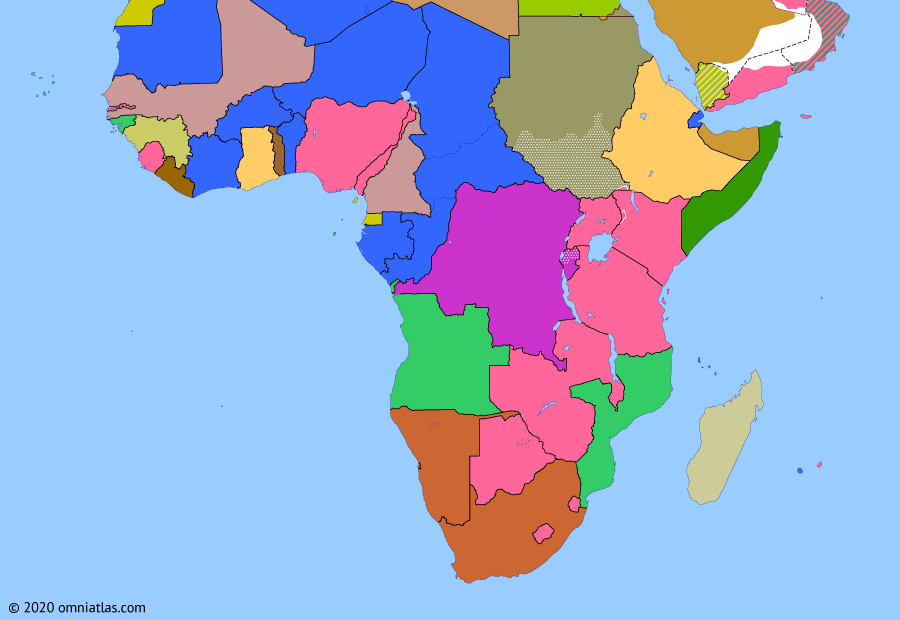Sub-Saharan Africa 1960: French Withdrawal from West Africa

26 June 1960
26 Jun 1960
French Withdrawal from West Africa
30 Apr 1947 Malagasy Uprising
1 Apr 1950 United Nations Trust Territories
25 Mar 1953 Mau Mau Uprising
1 Jan 1956 Independence of Sudan
6 Mar 1957 Independence of Ghana
2 Oct 1958 Independence of Guinea
3 Feb 1960 Year of Africa begins
26 Jun 1960 French Withdrawal from West Africa
14 Jul 1960 Congo Crisis
5 Aug 1960 UN Operation in the Congo
17 Aug 1960 French Withdrawal from Equatorial Africa
5 Sep 1960 Fall of Lumumba
24 Dec 1960 Year of Africa ends
Having accepted the end of its colonial empire, France granted independence to its remaining West African colonies between April and November 1960. However, many of these countries remained within the French Community and retained close ties with France.